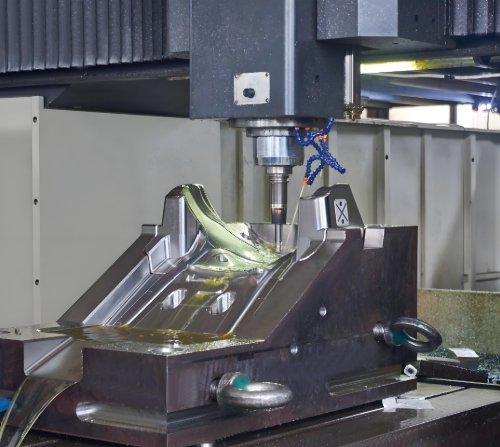
Car exteriors need strength and style. Automotive Injection Molds shape high-quality exterior parts. Bumpers, grilles, and panels require precision. Expert Mold Makers ensure perfect designs. Advanced materials improve durability. Injection molding provides cost-effective production.
Why Injection Molding is Essential for Car Exteriors
1. High Precision for Complex Designs
Car exteriors have intricate designs. Small errors affect aerodynamics. Automotive Injection Molds ensure accuracy.
2. Cost-Effective Mass Production
Molding creates thousands of parts quickly. Mold Makers design durable molds. This reduces production costs.
3. Lightweight and Strong Materials
Exterior parts need strength but must be light. Injection molding uses advanced plastics. These improve fuel efficiency.
4. Consistent Quality and Durability
Plastic parts face harsh weather. They must resist UV rays, moisture, and heat. Injection molding ensures uniform strength.
Key Exterior Parts Made with Injection Molding
1. Bumpers
- Absorb impact during collisions
- Made from high-strength plastics
- Designed for aerodynamics and safety
2. Grilles
- Protect the engine and improve airflow
- Available in custom designs
- Lightweight and corrosion-resistant
3. Headlamp Housings
- Must be transparent and heat-resistant
- Require precise molding for a perfect fit
- Protect LED and halogen bulbs
4. Side Mirrors
- Made from durable plastic and metal
- Must withstand vibrations and impact
- Automotive Injection Molds ensure a smooth finish
5. Fenders and Wheel Arches
- Protect wheels from debris and dirt
- Made with flexible yet strong materials
- Designed to match the car’s body shape
6. Door Handles
- Require a smooth, ergonomic design
- Can include integrated sensors
- Mold Makers ensure durability
7. Roof Components
- Sunroof frames and roof panels use injection molding
- Lightweight plastics reduce vehicle weight
- Designed for weather resistance
8. Spoilers and Air Deflectors
- Improve aerodynamics
- Made with lightweight, durable plastics
- Custom designs enhance vehicle aesthetics
9. Mudguards and Underbody Shields
- Protect the car from road debris
- Require impact-resistant materials
- Injection molding ensures precision
10. Trim and Decorative Parts
- Adds a stylish touch to the car’s exterior
- Made with glossy or matte finishes
- UV-resistant plastics prevent fading
Materials Used in Automotive Injection Molds
1. Polypropylene (PP)
- Lightweight and flexible
- Used for bumpers and trims
- Resists impact and chemicals
2. Acrylonitrile Butadiene Styrene (ABS)
- Strong and heat-resistant
- Used in grilles and panels
- Provides a smooth surface finish
3. Polycarbonate (PC)
- Transparent and tough
- Used for headlamp housings
- Withstands high temperatures
4. Thermoplastic Elastomers (TPE)
- Flexible yet strong
- Used for seals and mudguards
- Resists wear and tear
5. Polyamide (Nylon)
- High-strength and durable
- Used in door handles and structural parts
- Resistant to moisture and heat
Role of Mold Makers in Exterior Part Production
1. Designing High-Precision Molds
Mold Makers use advanced CAD software. They design molds for exact specifications. This ensures perfect exterior parts.
2. Creating Custom Molds for Different Models
Every car brand has unique designs. Automotive Injection Molds must match these specifications. Mold Makers create custom solutions.
3. Ensuring Durability and Consistency
Exterior parts face extreme weather. Mold Makers choose materials that last. This improves product lifespan.
4. Reducing Production Costs
Durable molds last for thousands of cycles. Mold Makers design cost-efficient solutions. This reduces waste and defects.
Advanced Techniques in Automotive Injection Molding
1. Gas-Assisted Injection Molding
- Reduces material use
- Creates hollow sections for lightweight parts
- Used in bumpers and trims
2. Multi-Component Molding
- Combines different materials in one mold
- Used for soft-touch door handles
- Enhances grip and durability
3. Insert Molding
- Embeds metal components in plastic parts
- Used in reinforced brackets and handles
- Improves strength without extra weight
4. In-Mold Decoration (IMD)
- Adds textures and colors directly in the mold
- Prevents peeling and fading
- Used in decorative trims and logos
5. High-Precision CNC Machining for Molds
- Ensures perfect mold dimensions
- Reduces defects in finished parts
- Increases mold longevity
Trends in Automotive Exterior Injection Molding
1. Lightweight Designs for Fuel Efficiency
- Manufacturers use lighter plastics
- Reduces fuel consumption
- Mold Makers focus on weight reduction
2. Smart Components with Sensors
- Door handles include keyless entry
- Injection molding integrates electronic parts
- Improves vehicle functionality
3. Eco-Friendly and Recycled Materials
- Reduces environmental impact
- Biodegradable plastics gain popularity
- Automotive Injection Molds adapt to green technologies
4. 3D Printing for Rapid Prototyping
- Speeds up mold development
- Reduces costs for new designs
- Enhances customization options
Challenges in Automotive Injection Molding
1. Meeting Strict Quality Standards
- Exterior parts must be flawless
- Any defect affects the car’s look
- Mold Makers use precise quality control
2. Maintaining UV and Heat Resistance
- Plastics degrade under sunlight
- Special coatings prevent fading
- Materials must withstand extreme temperatures
3. Balancing Cost and Performance
- High-performance plastics are expensive
- Mold Makers optimize material selection
- Reduces costs without losing quality
4. Ensuring Structural Strength
- Some parts must endure high pressure
- Automotive Injection Molds create reinforced designs
- This prevents cracks and deformations
Future of Automotive Injection Molds in Exterior Design
1. Smart and Adaptive Materials
- Plastics that change properties under stress
- Self-repairing materials for minor damage
2. AI-Driven Mold Optimization
- AI predicts and corrects molding defects
- Improves production efficiency
3. Sustainable Manufacturing Techniques
- Reduces energy consumption
- Uses biodegradable and recycled plastics
4. Fully Automated Production Lines
- Robotics improve speed and accuracy
- Reduces labor costs and defects
Automotive Injection Molds play a key role in car exteriors. They create strong, stylish, and precise parts. Expert Mold Makers design durable molds for efficient production. Advanced materials improve performance. Future innovations will make molding even more efficient.
